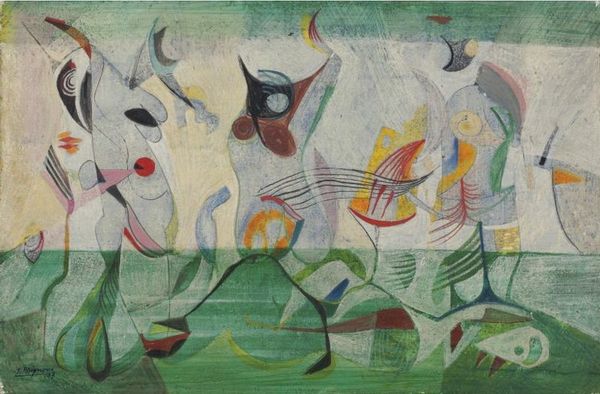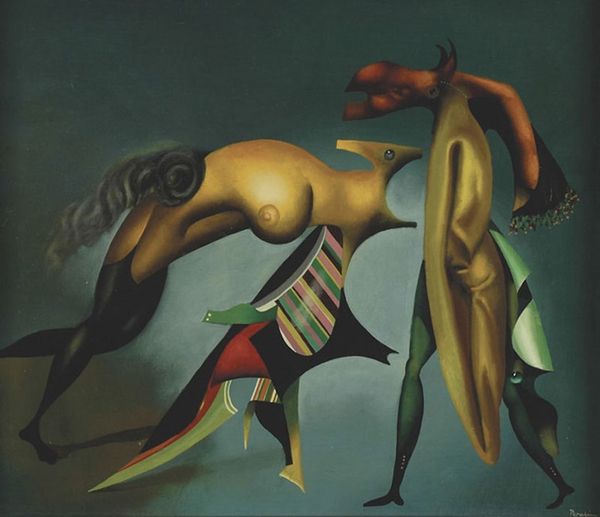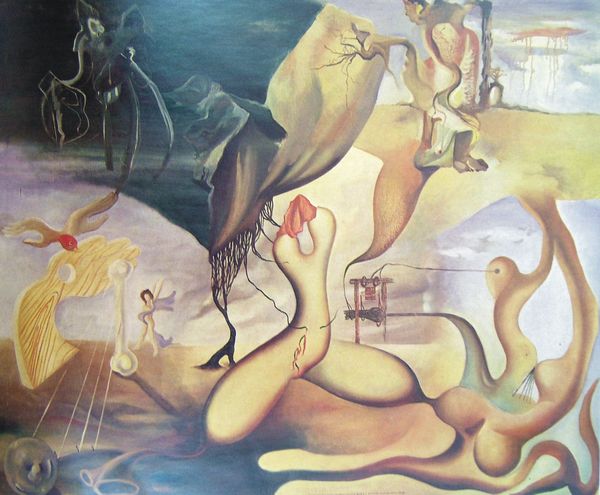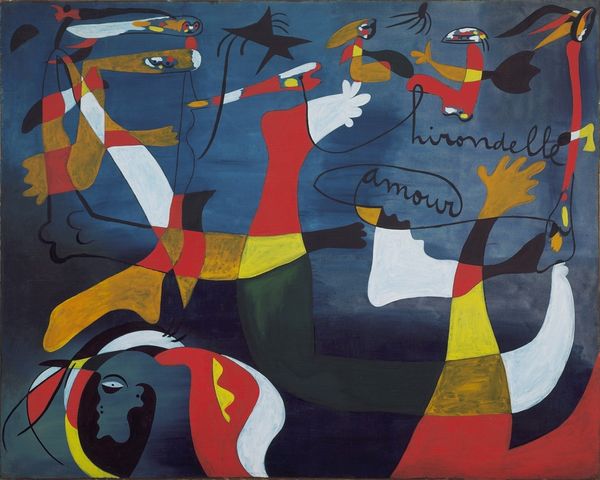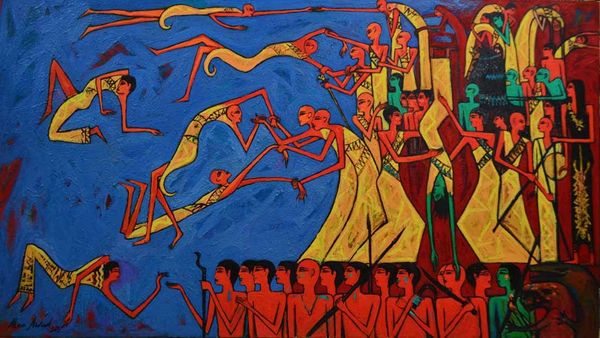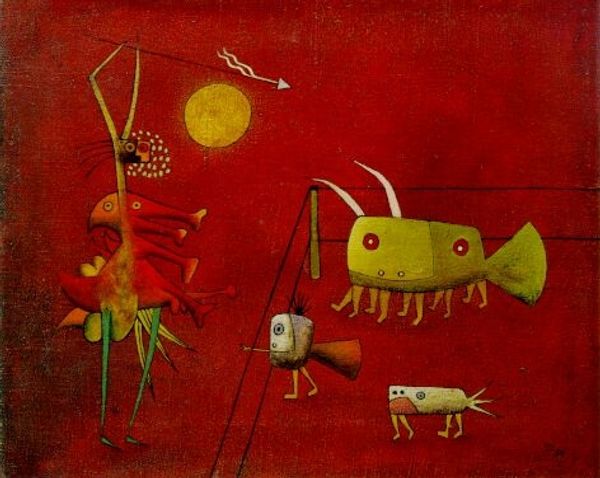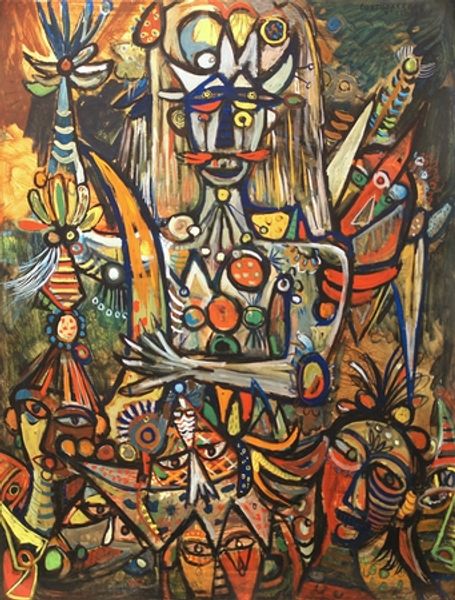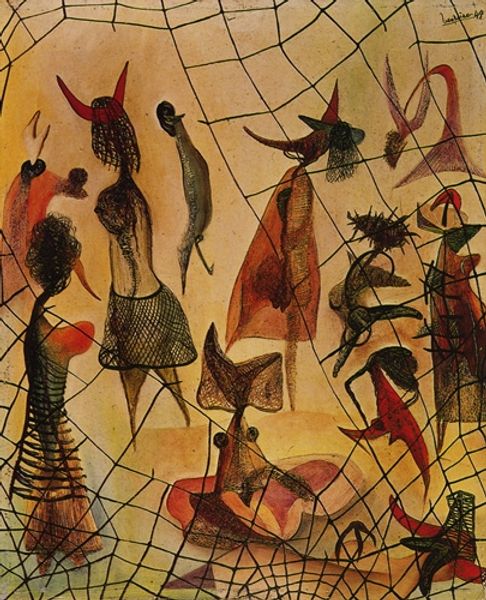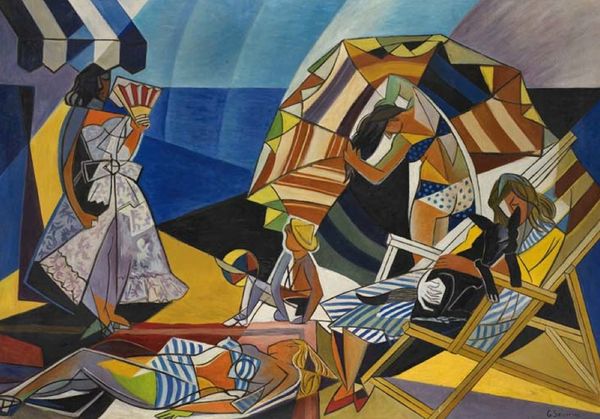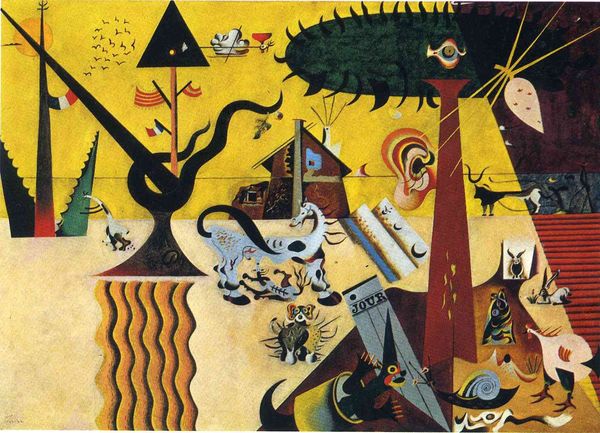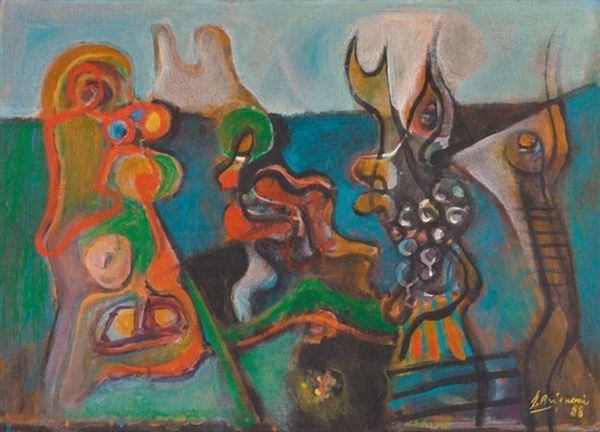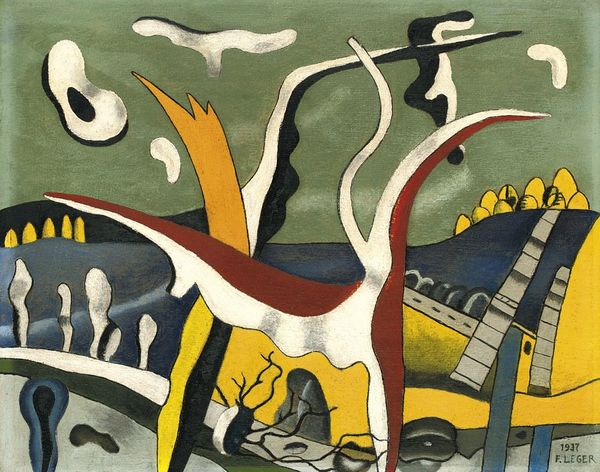
Copyright: Jules Perahim,Fair Use
Editor: This is "La guerre africaine," or "The African War," painted by Jules Perahim in 1976 using acrylic paint. It definitely has a dreamlike quality, but also a slight feeling of tension with the sharp lines and weapon-like objects. What historical context informs this depiction of war, in your opinion? Curator: That feeling of tension is crucial. The 1970s were turbulent times globally, marked by Cold War anxieties and various post-colonial conflicts. Perahim, who experienced political persecution in Romania, may be channeling a broader critique of power and its impact. Notice how he abstracts the figures, almost dehumanizing them into geometric forms. Editor: So, you're saying the abstraction serves a purpose beyond aesthetics? Curator: Precisely. Consider the public role of art, particularly surrealism, in challenging political norms. Are these figures meant to represent specific parties, or are they stand-ins for broader concepts of aggressors and victims in an increasingly abstract form? Is Perahim engaging with or critiquing representations of African conflict in European art? What do you think? Editor: I didn't immediately think of colonial-era tropes, but seeing those strange, elongated bodies, I do wonder about a sort of alienation—from humanity or from place? Also how the bright colours highlight these more sinister aspects, I suppose it forces you to reckon with them more clearly. Curator: The colours indeed amplify the dreamlike, unsettling quality. Thinking about art's role, Perahim asks the viewer to consider power dynamics, challenging assumptions. Editor: I really see the narrative in a totally different light. Thank you for elaborating. Curator: It's fascinating how art can serve as a cultural mirror, and reveal the social context in new ways.
Comments
No comments
Be the first to comment and join the conversation on the ultimate creative platform.
